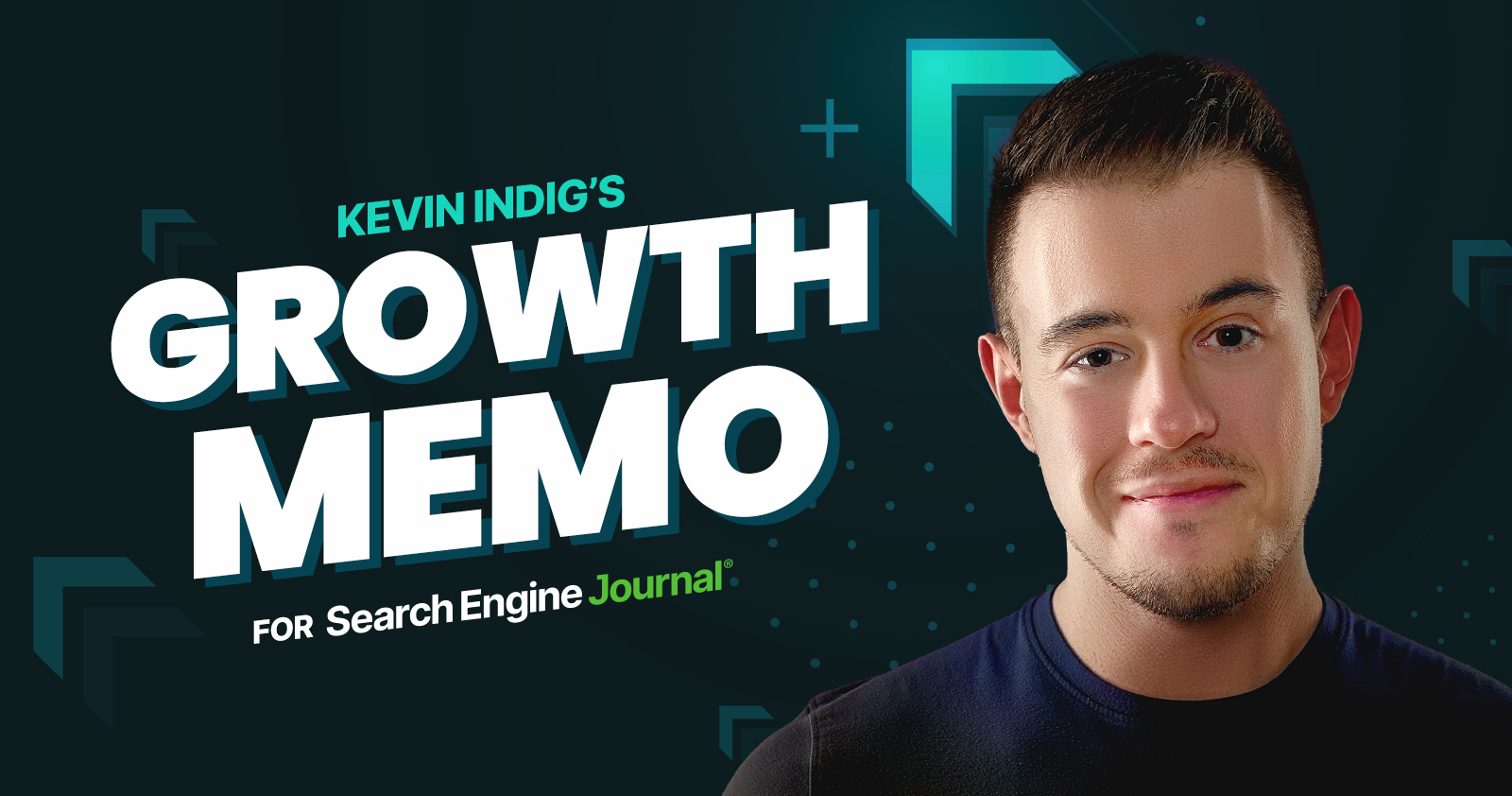
Сохранять ногу с ИИ — утомительно и подавляюще — и так важно.
Чтобы удовлетворить мой собственный интерес и упростить для вас вещи, я посвятил несколько часов изучению 19 уникальных анализов обзоров искусственного интеллекта (AIOS). Я сжал их выводы и организовал основные моменты вокруг пяти важных вопросов:
Купил акции на все деньги, а они упали? А Илон Маск снова написал твит? Знакомо. У нас тут клуб тех, кто пытается понять этот цирк и не сойти с ума.
Купить на падении (нет)- Как часто Google показывает обзоры ИИ?
- Какие обзоры ИИ запускают?
- Как обзоры искусственного интеллекта влияют на скорости кликов и трафик SEO?
- Как можно оценить в обзорах ИИ?
- Как вы должны переосмыслить создание контента для обзоров искусственного интеллекта?
Это руководство идеально подходит для вас, если вы:
- Хотите получить всеобъемлющий обзор обзоров ИИ.
- Поиск сравнения результатов из обзора ИИ.
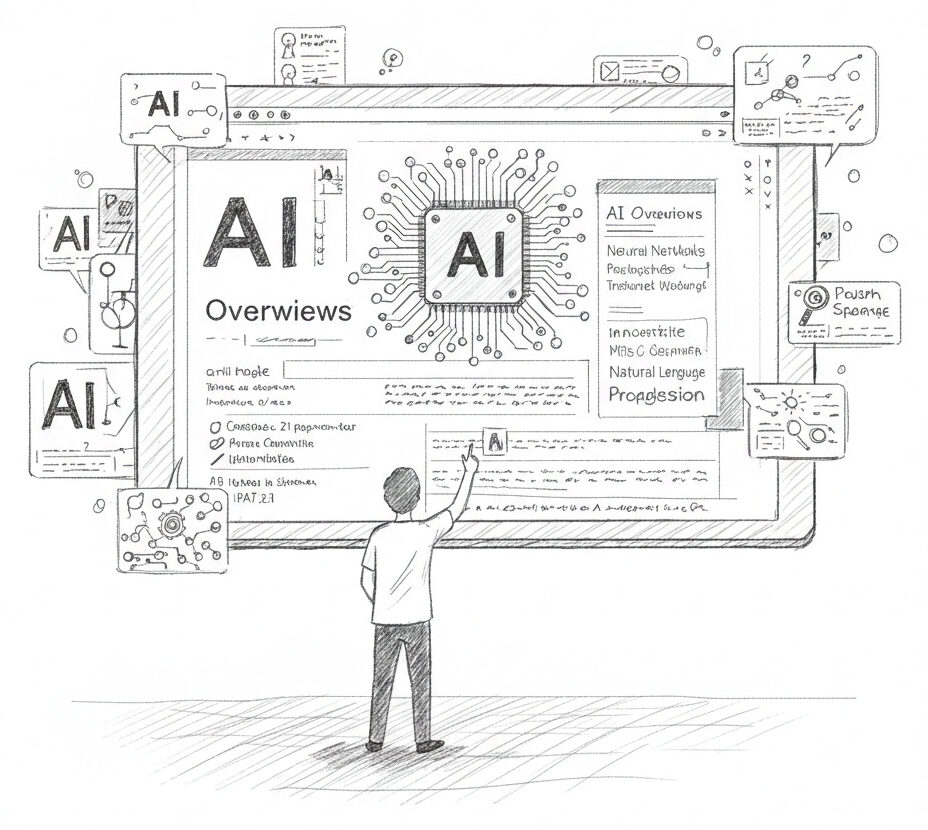
Я предлагаю провести «суммарный анализ» (в исследованиях): суммарный анализ — это статистический метод, когда исследователи объединяют данные из многочисленных отдельных исследований, посвященных тому же субъекту, чтобы генерировать единый, более сильный вывод относительно общего воздействия. Этот подход предлагает более широкую перспективу, чем любое отдельное исследование, значительно улучшив наше понимание темы.
По сути, это анализ, который собирает и синтезирует результаты многочисленных исследовательских статей, чтобы обнаружить общие темы и закономерности в данных.
Как специалист по цифровому маркетингу, я последовательно подчеркивал важность сбора большего количества данных для укрепления наших убеждений. К счастью, теперь у нас есть достаточно данных в нашем распоряжении. Пришло время использовать эту информацию и сделать значимые выводы.
Исследования
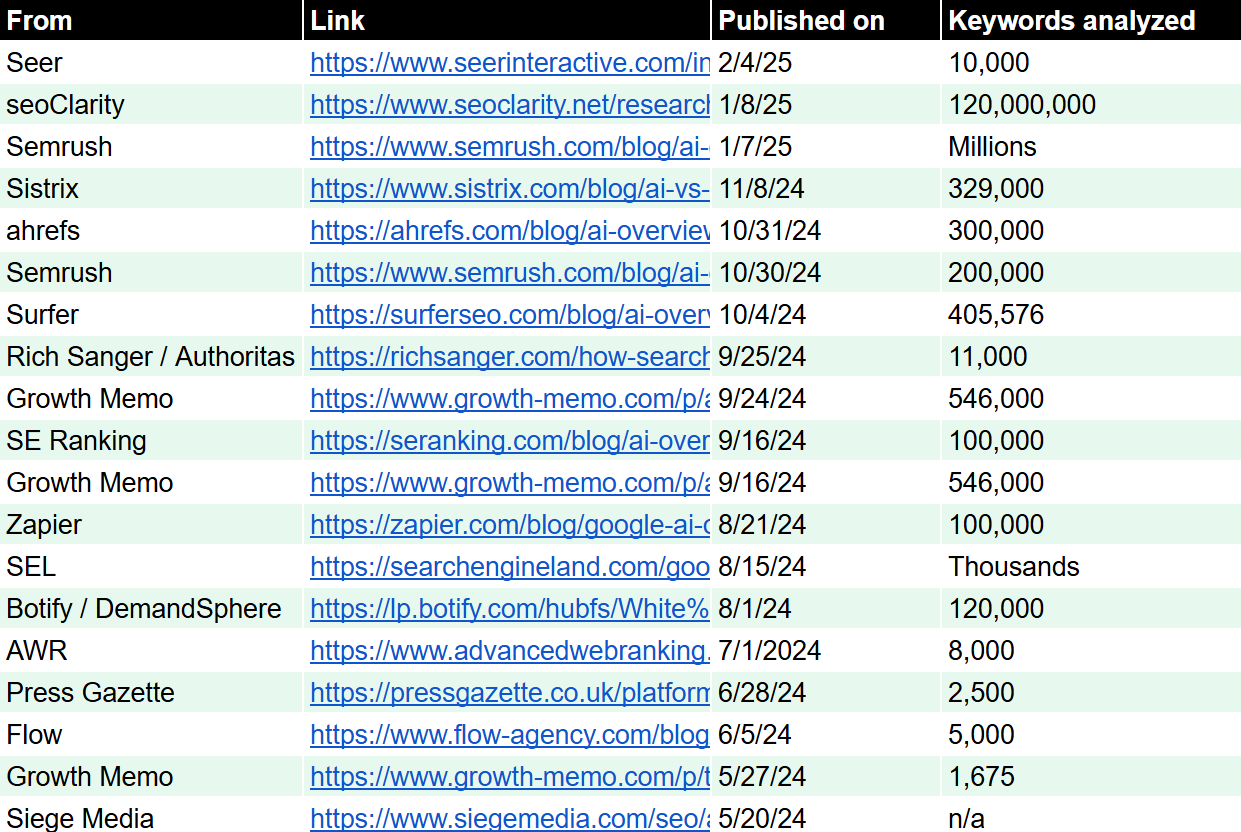
Получите таблицу с размерами образцов и даты публикации: лист.
- Google AIO Impact — SEO & PPC CTRS.
- Обзор ИИ: что они и как они влияют на SEO?
- Исследование обзоров ИИ: Внутри новой поисковой реальности Google реальность
- Я проанализировал ключевые слова 300K. Вот что я узнал о обзорах ИИ
- Мы изучили 200 000 обзоров искусственного интеллекта: вот что мы узнали
- Google AI Обзор исследования: 25+ статистика из 405 576 поисков
- Поиск намерений и обзоров ИИ: Изучение понимания
- ИИ в инновациях – Часть 2
- Исследование AI Overviews: реклама Google в поисковой выдаче, включающей AIO
- ИИ в инновациях – Часть 1
- Как обзор Google AI влияет на 20 отраслей промышленности
- Издатели сообщают о «незначительном» влиянии обзоров Google AI на трафик
- Влияние обзоров искусственного интеллекта Google: исследование SEO Research
- Обзорное исследование искусственного интеллекта по 8000 ключевым словам в поиске Google
- Влияние ИИ на дорожное движение
- Искусственный интеллект рассматривает отчет о влиянии SEO [Новые данные]
- Выявлено «разрушительное» потенциальное влияние обзоров Google с использованием искусственного интеллекта на узнаваемость издателей
- Обзор тенденций в области искусственного интеллекта: информация о 5000 ключевых словах в области управления персоналом и трудовых ресурсов для SaaS
- Искусственный интеллект против SEO Как выглядит будущее поисковой системы?
https://www.searchenginejournal.com/wp-json/sscats/v2/tk/Middle_Post_Text
Как часто Google показывает обзоры с использованием искусственного Интеллекта?
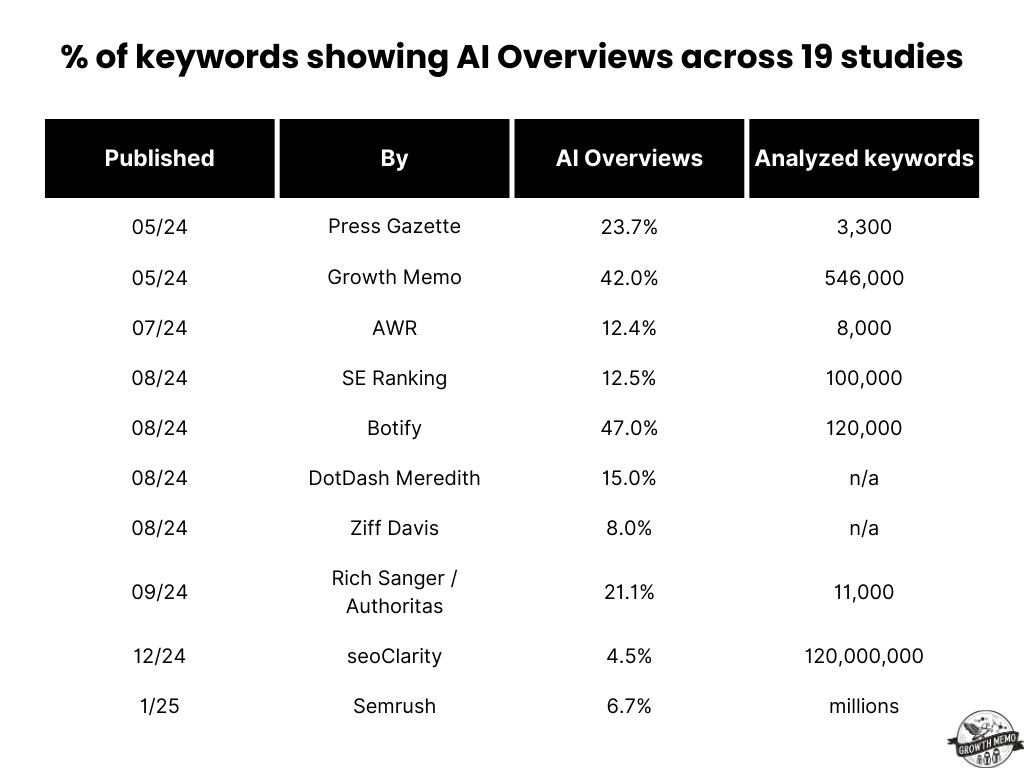
Главный вопрос, который возникает, заключается в том, «насколько это важно?» Я был озадачен, поскольку ИИ-апокалипсис, предположительно, еще не наступил, по крайней мере, на это указывают имеющиеся данные.
Сколько ключевых слов показывают AIO в соответствующих исследованиях:
- Press Gazette, 24.05.2018: 23,7% из 3300 ключевых слов для новостей (США). [17]
- Отчет о росте, 24.05.2018: 42% из 546 000 запросов. [15]
- AWR, 24.07.2018: 12,4% из 8000 ключевых слов. [14]
- Рейтинг SE на 24.08: 12,47% из 100 000 ключевых слов. [9]
- Botify, 08/24: 47% of 120,000 keywords. [3]
- DotDash Meredith, 08/24: 15% “of searches across our categories.”
- Ziff Davis, 08/24: “8% of most important queries”. [12]
- Rich Sanger / Authoritas, 09/24: 21.1% of 11,000 keywords. [7]
- seoClarity, 12/24: 4.5% of 120 million keywords. [13]
- Semrush, 01/25: 6.7% across millions of keywords. [5]
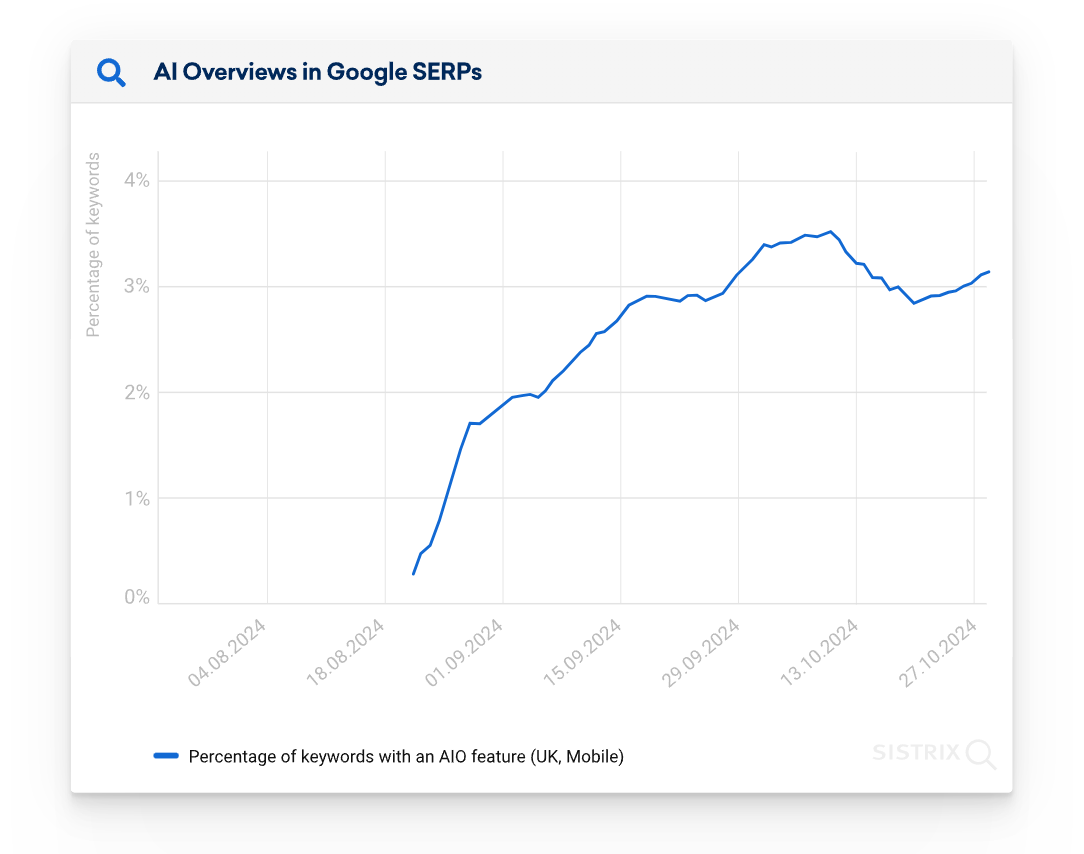
The coverage varies very much by industry.
Industry Distribution
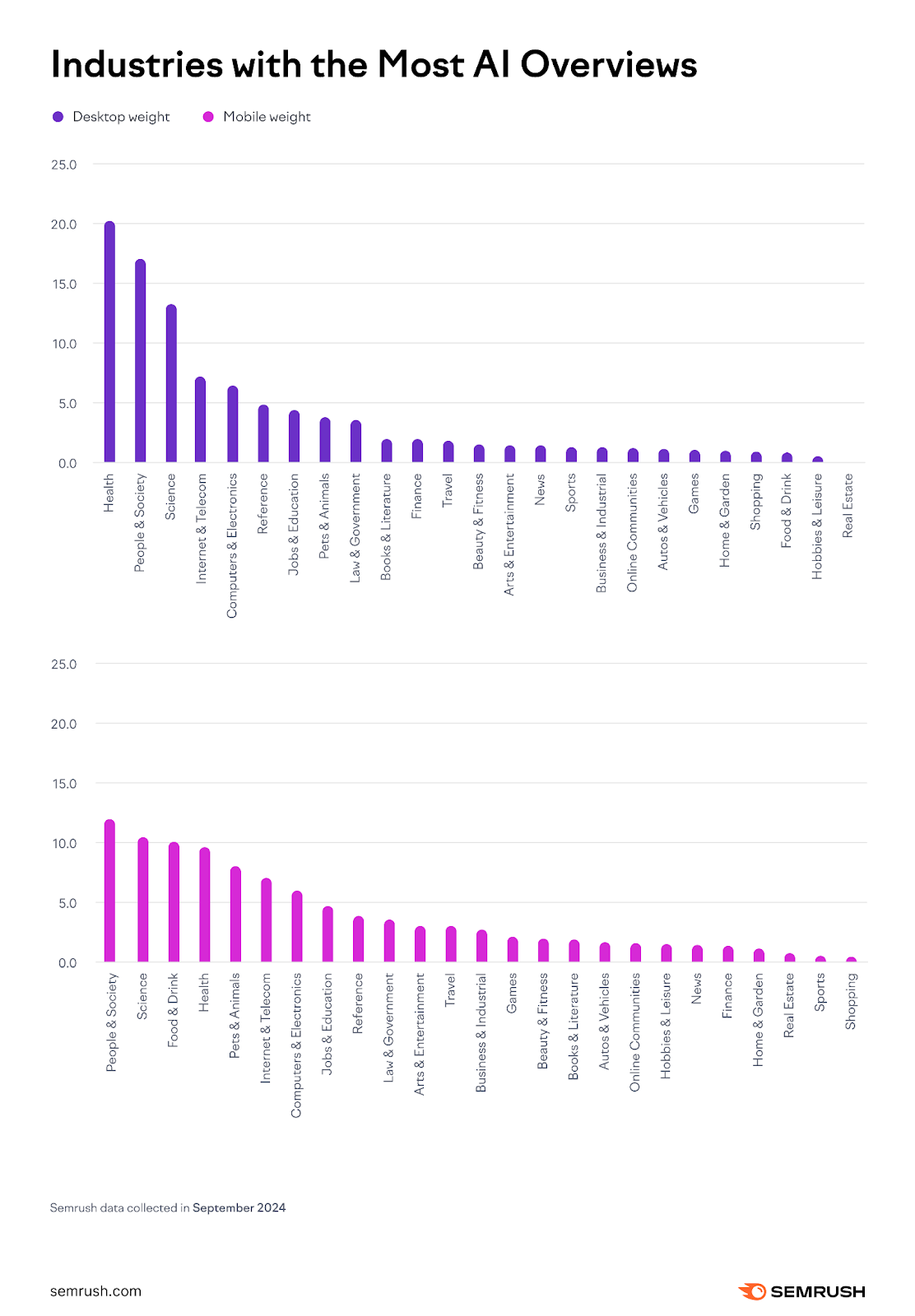
Press Gazette, 05/24: [17]
- Horoscopes: 62%
- Health: 55%
- Geo locations: 47%
- Shopping: 43%
- Media & Tech: 36%
AWR, 08/24: [14]
- Health: 67.5%
- Safety: 46.1%
- Technology: 23%
- SEO: 17%
- Finance: 17%
Zapier, 08/24: [11]
- Relationships: 40.6%
- Food & Beverage: 23.6%
- Business: 18.5%
- Technology: 17.2%
- Wellness: 15.6%
SE Ranking, 08/24: [9]
- Relationships: 46.1%
- Food & Beverage: 33.5%
- Business: 23.4%
DotDash Meredith, 08/24: [12]
- Health
- Technology
- Finance
Semrush, 01/25: [5]
- Health: 23.0%
- Science: 20.1%
- Internet & Telecom: 11.7%
- Travel: 10.0%
- Computers & Electronics: 8.75%
Implications:
- AI Overviews came hot out of the beta gate on May 14, 2024. Since then, we’re seeing fewer keywords showing AI Overviews – not more. That’s counterintuitive to me. And a bit counter to my personal experience when using Search. But that’s the data.
- The latest studies share numbers between 4.5 and 6.7% compared to early studies that found 12.5 – 42%. It seems that the TsunAImi I was worried about hasn’t materialized itself yet, and there are still plenty of non-AIO keywords left that can deliver meaningful organic traffic. However, I wonder how well we really track the longtail keywords that show AIOs (more in a moment).
- It’s also noteworthy that Semrush [3] found significant differences between mobile and desktop AI Overviews: The most populated industries on the desktop are health, people and society, and science, while mobile shows most AIOs for people and society, science, and food & drink.
- YMYL industries like health show the most AIOs. And I just don’t understand why. If I were Google and launched LLM answers that are prone to hallucination, I’d start in a space where it’s less consequential, like people and society or entertainment. To be fair, some studies show that Google invests in those “lightweight” verticals. But health comes up most consistently at the top. I assume that Google has a lot of medical studies that it uses to ground health-related AI Overviews.
What Triggers AI Overviews?
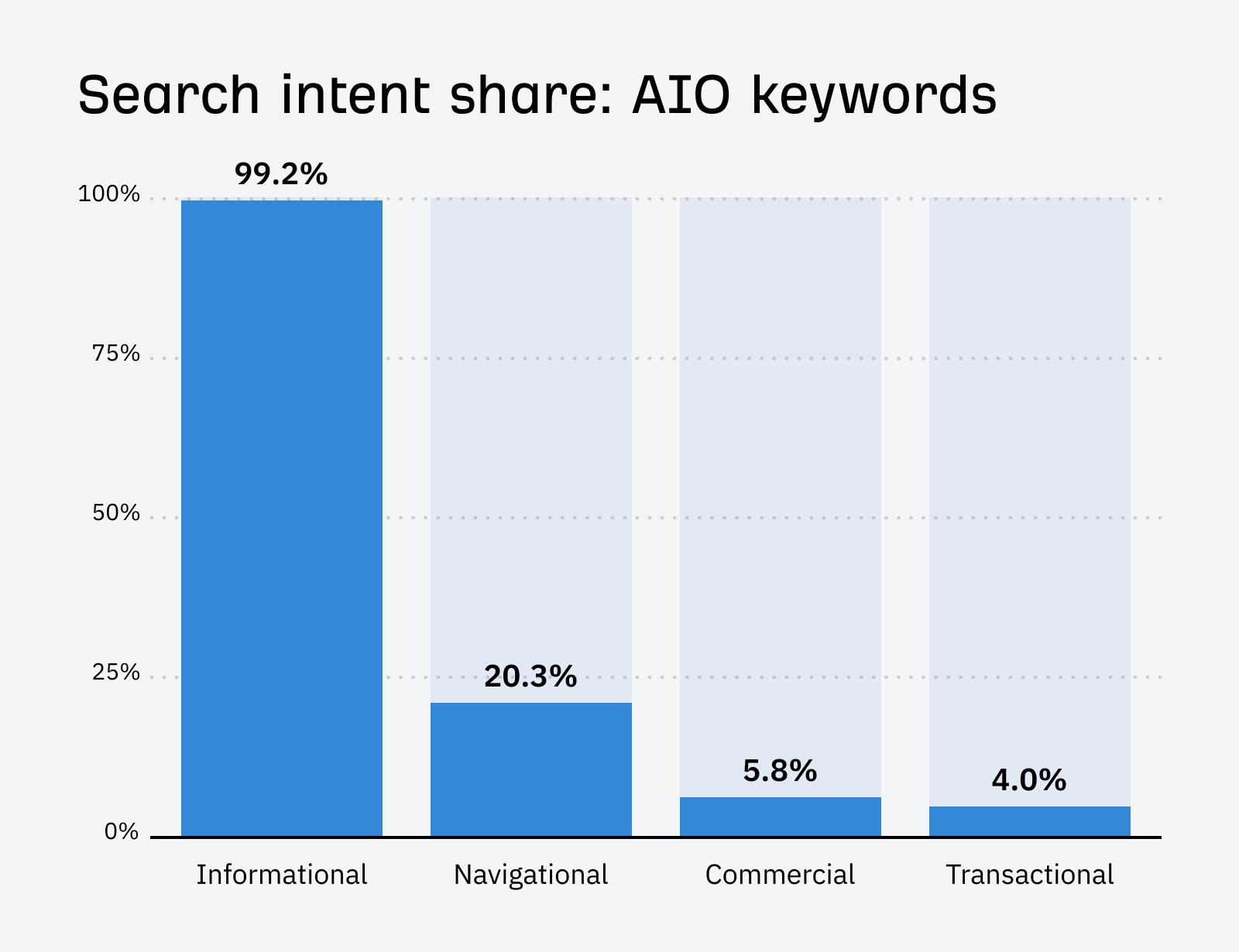
It’s generally believed that Artificial Intelligence Optimizers (AIOs) primarily interfere with search queries for information, and evidence supports this view.
Understanding search intent matters significantly since a relatively small percentage of keywords related to AI Overviews could potentially have a substantial effect on business if these specific keywords are crucial for the company and play a role in influencing purchasing decisions.
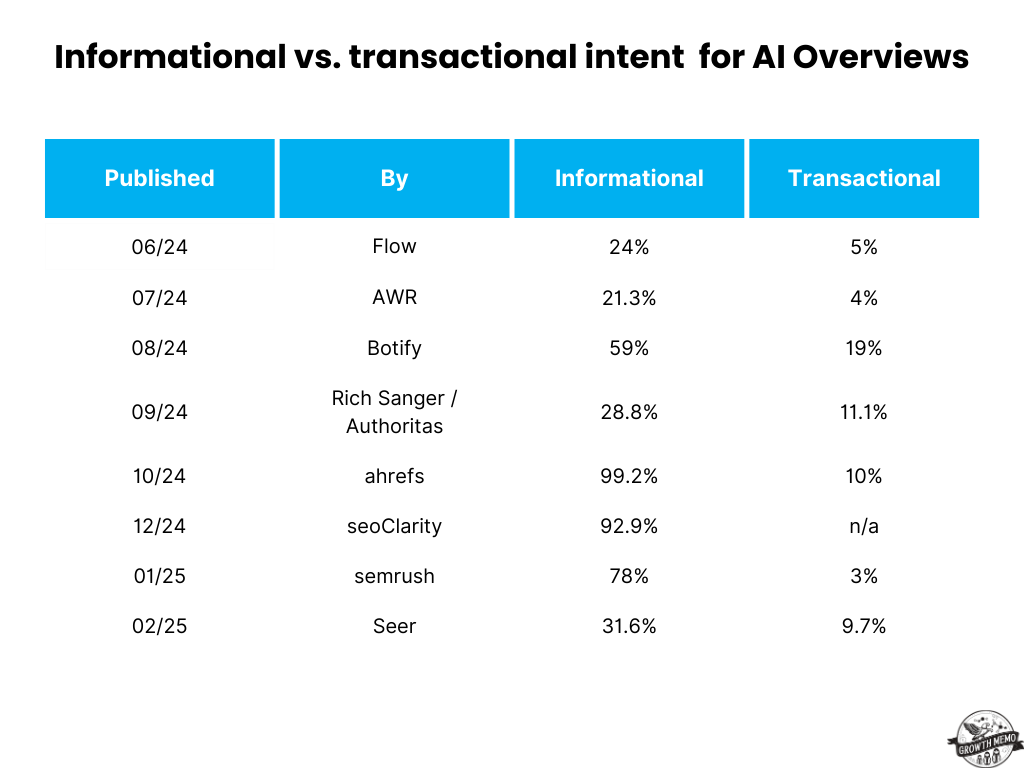
In every investigation I conducted, it was consistently found that most Artificial Intelligence overviews appear when one searches for keywords that indicate a desire for information, such as questions.
- Flow, 06/24: 24% of AIOs show up for top-of-the-funnel and 5% for bottom-of-the-funnel keywords. [18]
- AWR, 07/24: 34.7% of queries showing an AOI include the question word “how.” 21.3% of AIOs show up for informational keywords, compared to 4% for commercial/transactional. [14]
- Botify, 08/24: 59% of informational keywords trigger an AIO, compared to 19% of commercial keywords. [3]
- Rich Sanger / Authoritas, 09/24: 28.8% of keywords showing an AIO are informational compared to 11.1% commercial/transactional. [7]
- Ahrefs, 10/24: 99.2% of information keywords trigger an AIO compared to 10% of commercial/transactional keywords. [4]
- seoClarity, 12/24: 92.9% of keywords showing an AIO have informational intent. [13]
- Semrush, 01/25: 80% of desktop and 76% of mobile AIOs targeted informational keywords. 35% of desktop and 32% of mobile keywords were questions. Transactional keywords showed AIOs only 3% of the time. [5]
- Seer, 02/25: 31.6% of keywords showing an AIO are questions compared to 9.7% without an AIO. [1]
The relationship between user intent and query length suggests that longer queries make it simpler to understand what the searcher is looking for. Additionally, when the search volume is low, it becomes easier to discern user intent.
Longtail Vs. Shorthead
Longer queries are more likely to trigger AIOs:
- AWR, 07/24: Queries with five words (long-tail) trigger AIOs 22.6% of the time compared to one with 0.9% and 10-word queries with 0.2%.
- Botify, 08/24: 73.6% of long-tail queries (+5 terms) trigger an AIO, compared to 8.9% for short-head queries. Also, 55% of queries < 1,000 monthly searches show an AIO. [3]
- Ahrefs, 10/24: Long-tail keywords are more likely to trigger AIOs than shorthead keywords. Search volume for keywords showing AIOs is 193x smaller than for keywords not showing AIOs. [4]
- Semrush, 01/25: 82% of desktop and 76% of mobile AIOs occurred for keywords with less than 1,000 monthly searches. [5]
- Seer, 02/‘25: The average query length leading to an AI Overview was 4.29 words compared to 3.48 words for a query not presenting an AIO. [1]
Maybe not a trigger, but a strong co-occurrence exists between AIOs and SERP Features.
Featured Snippets
Featured Snippets and AI Overviews tend to show up together:
- AWR, 07/24: AI Overviews appear alongside Featured Snippets in 59.5% of keywords. [14]
- Botify, 08/24: Featured Snippets and AIOs co-occur 60% of the time and cover 67-76% of your screen, depending on the device. [3]
- Ahrefs, 10/24: Featured Snippets appear for 65.5% of keywords showing an AIO. Google is much less likely to show Knowledge Panels and videos when AIOs are present, probably because the Knowledge Graph is the foundation for AIO generation. [4]
Paid Search Results
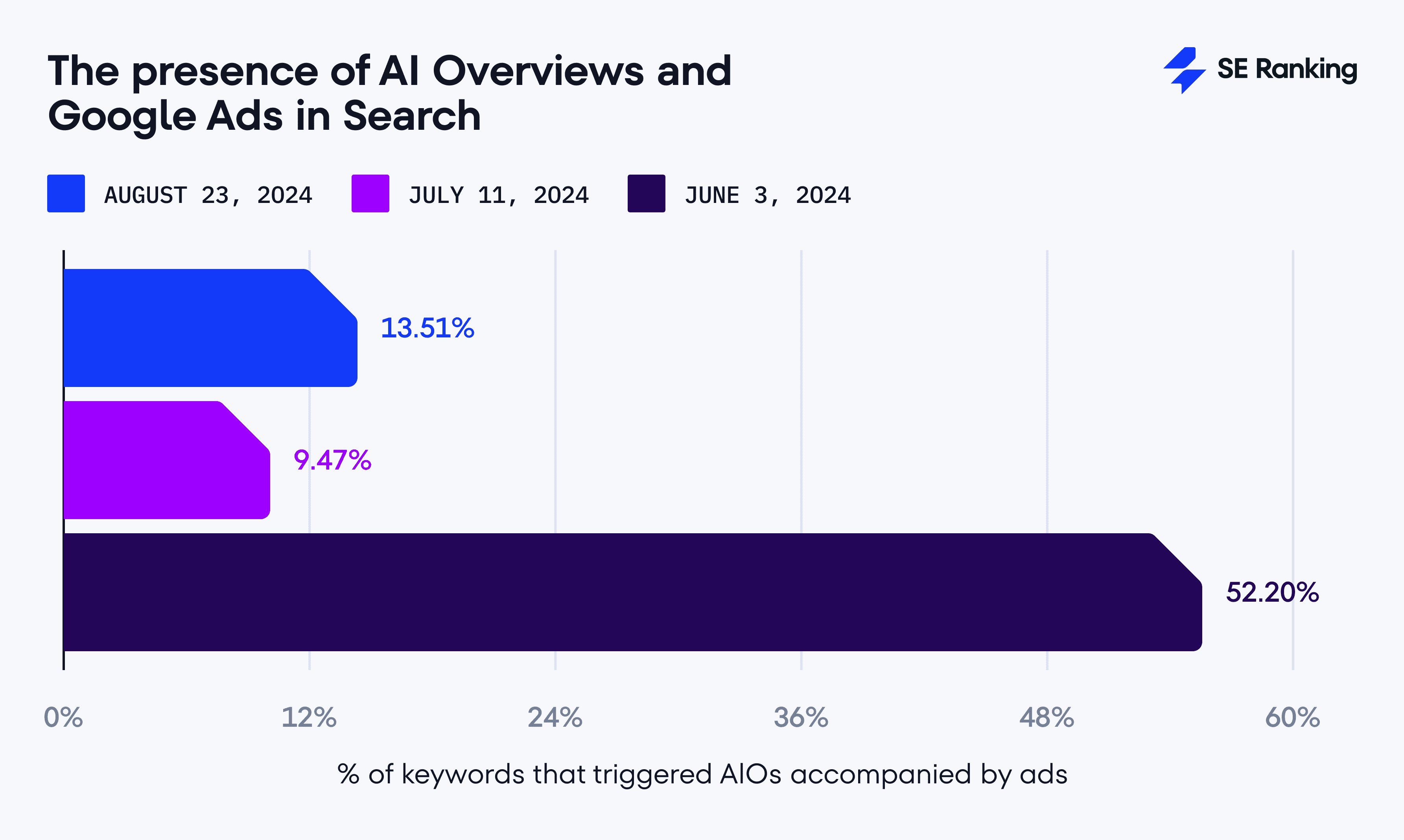
Google seems to shy away from showing PPC ads when AIOs are present:
- SE Ranking, 08/24: 13.5% of AIOs show up next to ads on desktop. [9]
- Semrush, 01/25: 5% of keywords showing AIOs also showed PPC ads. [5]
- Seer, 02/25: Paid Search CTRs dropped across the board – with or without an AIO, but they were lower comparatively when Google shows AIOs. [1]
Implications:
- If there is SEO traffic to be lost (getting to that shortly), it’s mostly for informational searches, as we can also see the fact that Featured Snippets tend to show up with AIOs. Commercial and transactional keywords don’t show a high rate of AI Overviews, maybe because that’s where ads show up the most, and Google doesn’t want to kill its click-through rates.
- On the other hand, Google’s Knowledge Graph does often show up with AIOs. Why? Most likely because the Knowledge Graph is the foundation for Google’s AIOs and doesn’t provide net value in the search results. As a result, you should check whether your brand has a knowledge graph and what entities Google associates it with. It could impact how you should up in AIOs.1
- AI Overviews are more likely to show up for longer queries with lower search volume. Makes sense as AIOs answer long questions so much better than classic search results (Google never really figured longtail search out), and longer queries are searched by fewer people because they’re more specific.
How Do AI Overviews Impact Click-Through Rates And SEO Traffic?
It’s understood that Artificial Intelligence Optimized (AIO) pages may not appear as frequently in searches compared to when they were first created. They typically emerge for detailed informational queries with fewer searches. However, when they do appear, what kind of influence or effect do they have?
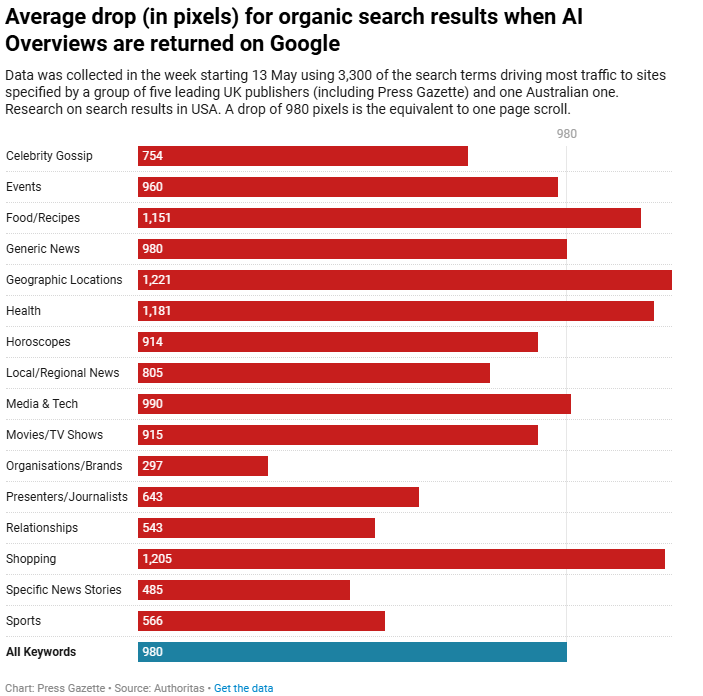
AIOs push organic results down significantly:
- Press Gazette, 05/24: On average, organic search results dropped by -980 pixels when AIOs were present. In the shopping vertical, the average was 1,205! Keep in mind that the data was gathered just when AI Overviews first rolled out. Things could and likely do look very different now. [17]
- AWR, 07/24: The average AIO is 912 pixels long. [14]
- Botify, 08/24: AI Overviews take up 42% of the screen on desktop and 48% on mobile. [3]
- Rich Sanger / Authoritas, 09/24: AI Overviews push organic results down by an average of 202 pixels. [7]
- The fact that AI Overviews occupy so much screen real estate alone hurts the CTR for organic results.
Organic Click-Through Rates
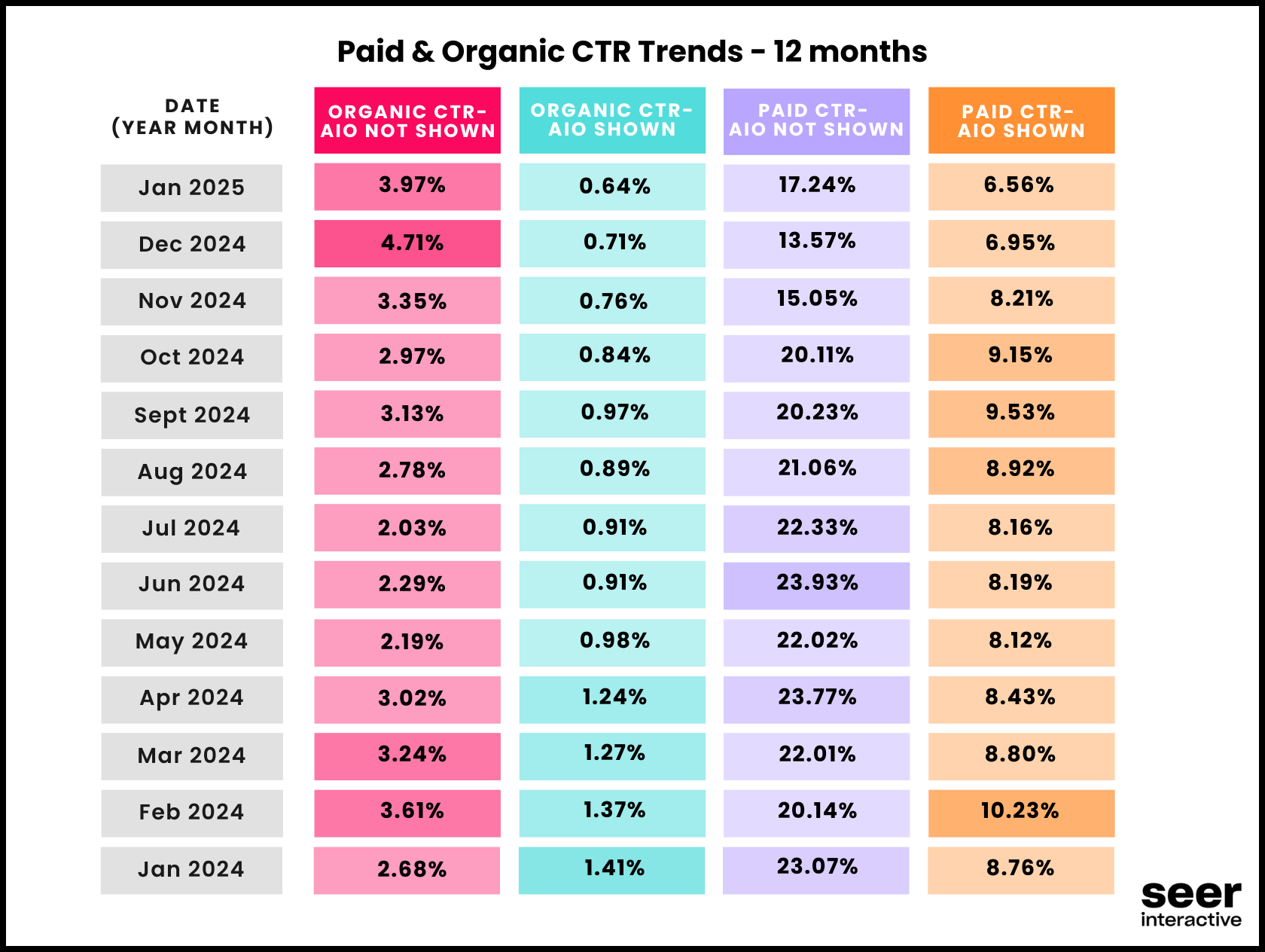
Artificial Intelligence Optimizations (AIOs) tend to decrease Click-Through Rates (CTRs) and Search Engine Optimization (SEO) traffic. It’s worth noting that some industries focusing on high-intent keywords may experience less of an effect compared to others.
- Growth Memo, 05/24: A negative impact of -8.9% on click-through rates on average. [15]
- Siege Media, 05/24: 3% increase in CTR after AIOs went live. [16]
- DotDash Meredith, 08/24: minimal differences in CTR between search results with and without AI Overviews. [12]
- Sistrix, 11/24: Prominent citations in AI Overviews lead to more clicks than Featured Snippets, but still much less compared to classic organic results. [19]
- Seer, 02/25: AIOs cut organic CTRs in less than half and tend to show up for queries that already got fewer clicks before (zero-click searches). When cited, sites get more traffic, and average CTR grows from 0.74% to 1.02%. [1]
Being cited matters, but how much room is there to win in citations?
Number Of Citations
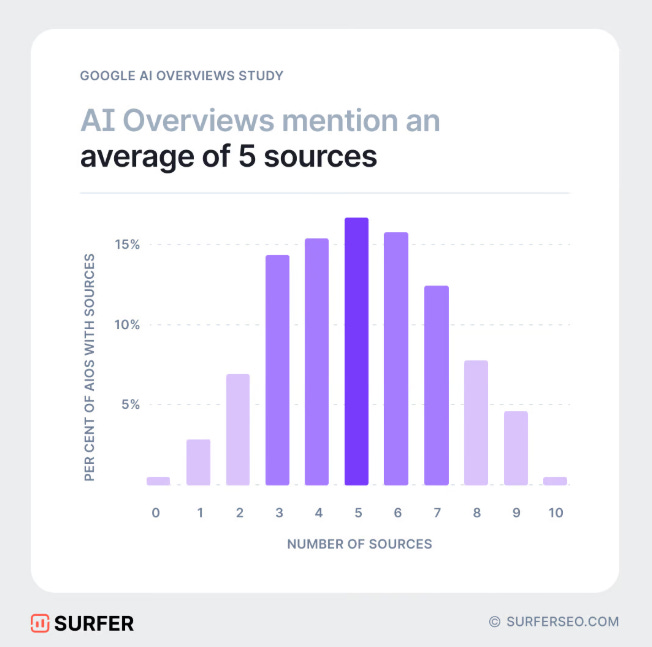
Given that getting mentioned in AIOs (Answer In Organic Search) impacts organic traffic, the following question arises: How much space or visibility is available for these mentions? The response appears to be approximately 5-8 instances.
- AWR, 07/24: AI Overviews contain 7.2 citations on average. [14]
- Rich Sanger / Authoritas, 09/24: The average number of citations is 8.2, with small variations across user intent. [7]
Implications:
- AIOs have a negative impact on CTRs. Intuition validated. “Ranking in AIOs,” a.k.a. being cited, should be the new goal in SEO when they’re shown in the SERPs.
- The data validates that informational searches are dwindling in SEO value. So, theoretically, we should see a lot more companies losing organic traffic, though not necessarily revenue from organic traffic. But that doesn’t seem to be the case, at least not to the intensity I expected. A possible reason could be that organic CTRs were already low for queries that show AI Overviews, as the Seer study shows. Maybe the negative impact of AIOs is a continuation of a trend that has already existed for years, which is Google answering more questions in the SERPs.
- What’s still unclear is if and when searchers click on organic results below AI Overviews and citations. I assume that user intent is also the deciding factor here, but we need more data.
How Can You Rank In AI Overviews?
Discussing «ranking in AIOs» essentially refers to getting mentioned or referenced. There’s still much to learn about the criteria Google uses to select pages for mention or reference.
Based on the data so far, we can agree on the following citation factors:
It’s Not Keyword Match
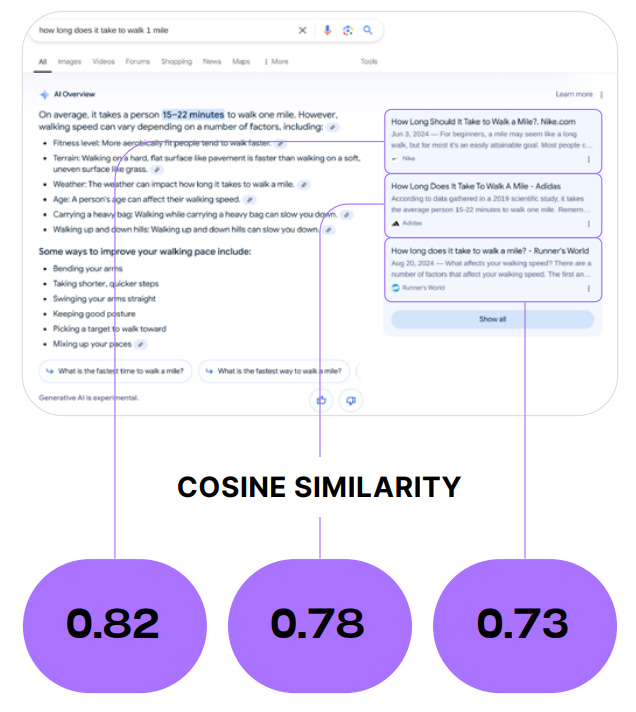
The number of AIOs citing the exact keyword is extremely low:
- Botify, 08/24: Text (Cosine) similarity between the AIO and cited pages shows a strong relationship, meaning the closer your text matches what’s shown in the AIOs, the higher your chances to be cited. [3]
- Surfer, 10/24: Only 5.4% of AI Overviews contain the exact search query. [6]
But your position matters as well.
Organic Ranking Position Matters Somewhat
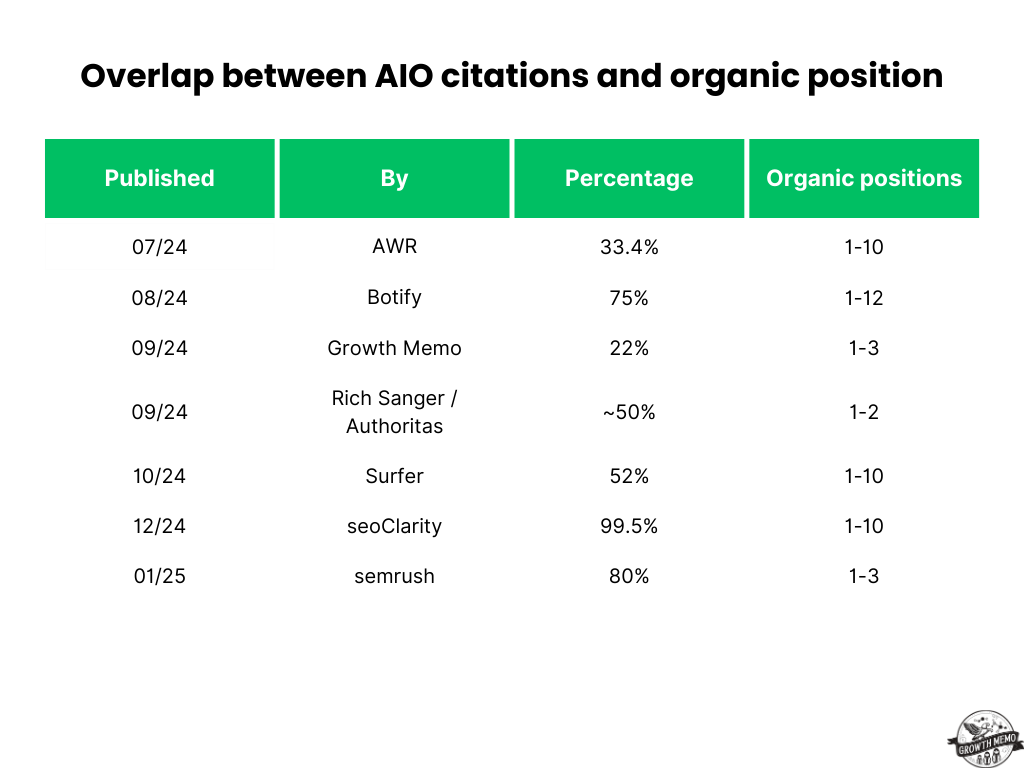
Ranking higher is better but not a requirement to get traffic from AIOs:
- AWR, 07/24: 33.4% of AIOs cite pages that rank in the top 10 positions. [14]
- Botify, 08/24: 75% of cited websites rank in the top 12 positions, but the median rank is 4. [3]
- Rich Sanger / Authoritas, 09/24: The top two positions are included in citations 47.8 – 53.8% of the time. [7]
- seoClarity, 12/24: AIOs cited the top 10 positions 99.5% of the time, and 80% of AIOs cite a page that ranks in the top 3 organic positions. [13]
- Semrush, 01/25: The overlap between AIO citations and organic search results is only 20-26%. Over 50% of AI Overviews on desktop and 60% on mobile did not link to the top organic result. [5]
Implications:
- Today, AI Overviews cite more pages in the top 10 ranking positions than when they initially launched.
- The best thing you can do to target AIOs is to run a Cosine similarity analysis between your text and the AIO. Pick the page that ranks best for the target keyword and check which parts of the AIO it could give the best answer to.
- Of course, strong technical fundamentals and good on-page SEO matter, but more to have a high ranking position and increase your chances to be picked as a citation rather than as a hard criterion AIOs evaluate.
How Should You Rethink Content Creation For AI Overviews?
Adjusting strategies for Artificial Intelligence (AI) optimized citations and mentions doesn’t mean taking a complete U-turn from traditional organic search engine optimization methods. However, it’s essential to understand the appropriate format for your content and where to publish it effectively.
AIO Length
The average AI Overview is around 90-170 characters:
- AWR, 07/24: The average AIO is 169 words long. [14]
- Botify, 08/24: The average AI Overview is 169 words and 912 pixels long. [3]
- Surfer, 10/24: AI Overviews are, on average, 157 words long, with 99% being shorter than 328. Featured Snippets average ~50 words. [6]
- Semrush, 01/25: 90 (mobile) to 119 words (desktop). [5]
AIO Format
Most AIOs contain lists:
- AWR, 07/24: 40% of AIOs are lists, 24% are paragraphs, and only a few have images. [14]
- Surfer, 10/24: 61% of AI Overviews are unordered lists, 21% contain no list, 12% are ordered lists, and 6% are ordered and unordered lists. [6]
Prominently Cited Domains
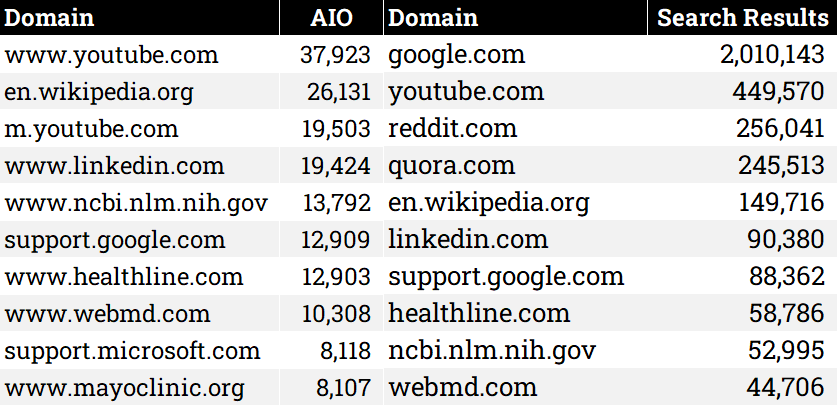
Youtube sticks out as the domain with the most citations:
- Rich Sanger / Authoritas, 09/24: YouTube and Wikipedia are cited most often in AIOs for information intent keywords. [7]
- Growth Memo, 09/24: The most cited domains are YouTube, Wikipedia, and Google, which often rank in lower positions. [10]
Implications:
- 90-170 characters equal roughly 15-40 words on average – not a lot! So optimizing your content for AIOs really seems to be about straightforward answers, no fluff, and a high degree of insight. Similar to optimizing for Featured Snippets, it seems AIO optimization is about tweaking small parts of an article over and over until you get the citation.
- The outsized impact of YouTube on AIOs pushes content generation further away from websites. I also found that LinkedIn is cited a lot in my research. So, social and content platforms could be part of modern SEO. At the very least, run tests on YouTube and LinkedIn.
Bottom Line
As a community, we’ve made significant progress in understanding AI Overviews and their impact.
Despite constantly changing, it seems reasonable at this point to say that Artificial Intelligence Optimized (AIO) sites tend to dominate less frequently searched, detailed information queries, potentially reducing click-through rates unless they are among the listed sources.
In approximately a year, I aim to compose a supplementary analysis, incorporating fresh studies, in order to address some of the lingering queries.
- How often do AI Overviews change?
- How does Google decide which products to list in ecommerce AIOs?
- What are sites doing at scale to get more AIO citations over time?
- What new AIO formats is Google testing, and how are they different?
- How do AIOs vary between countries for the same query?
Keep an eye out for the upcoming release of my comprehensive study comparing AI chatbots, such as ChatGPT and Perplexity, and their influence on search engines, which will be available next week.
Additionally, I aim to share at least three new, unique data analyses focusing on AI Overviews this year. Don’t forget to subscribe for the latest updates!
Смотрите также
- Акции SGZH. Сегежа: прогноз акций.
- Акции TGKN. ТГК-14: прогноз акций.
- Акции ELMT. Элемент: прогноз акций.
- Google расширяет использование автоматических объявлений AdSense на французском, испанском и японском языках
- Акции MDMG. Мать и дитя: прогноз акций.
- Акции SFTL. Noventiq: прогноз акций.
- Анализ динамики цен на криптовалюту TON: прогнозы TON
- Падение Dogecoin: История о двух трейдерах 🐕📉💥
- Новые данные: Основные факторы, влияющие на цитирования ChatGPT
- Акции MSRS. Россети Московский регион: прогноз акций.
2025-02-19 17:40
